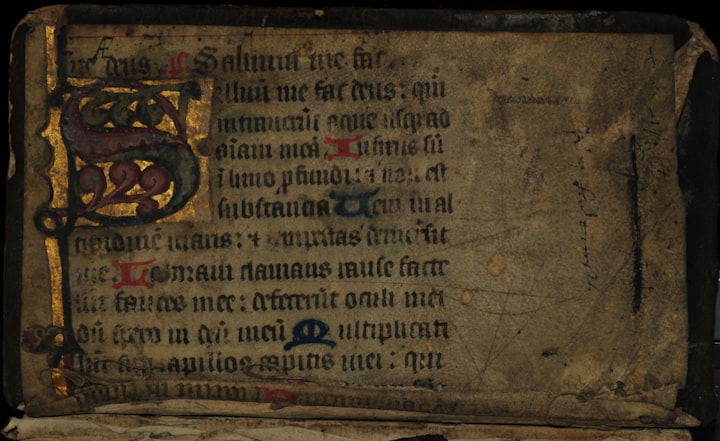The Enigma of the Voynich Manuscript
A Literary Code Yet to be Deciphered

In the vast annals of historical mysteries, one singular enigma has defied the scrutiny of scholars, linguists, and cryptographers for over a century—the Voynich Manuscript. Discovered in 1912 by the rare book dealer Wilfrid Voynich, this ancient codex is a testament to the resilience of the unknown, filled with an indecipherable script and intricate illustrations that have fueled endless speculation and fascination.
Spanning 240 pages, the Voynich Manuscript is believed to have originated in the early 15th century. Its vellum pages are adorned with vibrant illustrations, featuring botanical drawings reminiscent of unknown plant species, complex astronomical diagrams, and scenes that defy clear interpretation. Yet, it is the enigmatic written content that elevates the manuscript to the realm of the extraordinary—a script that has proven impervious to all attempts at translation.
The text, flowing from left to right, comprises an estimated 170,000 characters, arranged in clusters that bear a semblance to words or sentences. Despite the combined efforts of skilled linguists and cryptographers, the meaning of these symbols remains elusive. The script refuses to align with any known language, and traditional code-breaking methods have failed to unveil its secrets.
Numerous theories abound regarding the Voynich Manuscript, each attempting to unravel its mysteries. Skeptics propose that it may be an elaborate hoax, a carefully constructed enigma designed to confound and perplex. On the other hand, enthusiasts posit that the manuscript holds encoded knowledge—perhaps in the realms of herbal medicine, alchemy, or even extraterrestrial communication. The intricate illustrations, coupled with the cryptic script, fuel speculative debates about the manuscript's origin and purpose.
The journey of the Voynich Manuscript through history adds layers of intrigue to its mystique. It is believed to have passed through the hands of various owners, including the Holy Roman Emperor Rudolf II, a prominent patron of alchemy and the occult. Despite meticulous documentation of its journey, the origins of the Voynich Manuscript remain shrouded in uncertainty, further heightening its allure.
Advancements in technology have ushered in a new era of investigation, enabling researchers to deploy cutting-edge tools in their quest for understanding. High-resolution imaging techniques and computational linguistics have been applied in recent years to scrutinize every minute detail of the manuscript. Yet, the Voynich Manuscript remains a fortress of mystery, its secrets guarded with a resilience that has cemented its status as one of the most enduring puzzles in the realms of ancient manuscripts.
As we navigate the labyrinthine corridors of history, the Voynich Manuscript stands as a silent sentinel, inviting us to embark on a quest to unravel its secrets and peer into a world that has long eluded understanding. The allure of the unknown persists, and the journey to decode this literary puzzle continues—an odyssey that holds the promise of unlocking the mysteries of an age gone by.
The challenges surrounding the Voynich Manuscript extend beyond the intricacies of language and symbolism. The manuscript's journey through time, passing through the hands of various custodians, adds layers of complexity to the puzzle. Holy Roman Emperor Rudolf II, known for his fascination with the esoteric and alchemical pursuits, is one such custodian who contributed to the manuscript's aura of mystery.
Rudolf II's ownership of the Voynich Manuscript during the late 16th and early 17th centuries provides a glimpse into the historical context in which the manuscript thrived. As a patron of the arts and sciences, Rudolf II surrounded himself with a court of intellectuals, including alchemists, astronomers, and scholars. The manuscript, with its peculiar blend of botanical, astronomical, and fantastical imagery, found a home in this milieu of curiosity and inquiry.
However, the specific role the Voynich Manuscript played in Rudolf II's court remains obscured by the veils of time. Did the emperor see it as a work of profound wisdom, a key to unlocking hidden truths, or was it merely an intriguing artifact in his eclectic collection? The answers to these questions linger in the whispers of history, intertwined with the broader tapestry of Rudolf II's reign.
The subsequent journey of the Voynich Manuscript through the hands of various collectors further complicates the task of unraveling its secrets. The manuscript resided in obscurity for centuries, tucked away in private libraries and collections, changing hands without leaving a clear trail of provenance. Each custodian, whether a scholar or a collector, added a layer of intrigue to the manuscript's narrative.
In the early 20th century, the manuscript found its way into the hands of Wilfrid Voynich, a rare book dealer with an eye for the extraordinary. Voynich's discovery of the manuscript in a Jesuit college library in Italy marked the beginning of its modern chapter, thrusting it into the spotlight of academic and public attention. Yet, the newfound prominence did little to lift the shroud of mystery that enveloped the manuscript.
As technology advanced, providing new tools for analysis and investigation, researchers sought to unlock the secrets held within the Voynich Manuscript. High-resolution imaging techniques allowed for a closer examination of the intricate details of the illustrations, revealing nuances that had eluded previous generations. Computational linguistics, a product of the digital age, offered a fresh approach to deciphering the elusive script.
Despite these advancements, the Voynich Manuscript remains an enigma, holding its secrets with a tenacity that defies the relentless march of time. Theories continue to proliferate, each offering a unique perspective on the origin, purpose, and meaning of the manuscript. Some propose that it is a sophisticated work of cryptography, while others suggest it may be an intricate hoax designed to baffle and amuse.
One prevailing theory posits that the manuscript contains valuable information on herbal medicine. The detailed botanical drawings within its pages hint at a deep knowledge of plants and their properties. Could the manuscript be a compendium of medicinal wisdom, its insights lost to the passage of centuries? If so, the Voynich Manuscript becomes not only a historical puzzle but a potential reservoir of forgotten knowledge.
Another line of inquiry suggests that the script may be an invented language, a unique code created for a specific purpose. This theory aligns with the idea that the manuscript holds esoteric or occult knowledge, intended for a select few who possessed the key to its decipherment. The allure of the arcane, coupled with the manuscript's association with figures like Rudolf II, adds weight to this hypothesis.
The possibility of extraterrestrial communication, though speculative, has also found a place in the discourse surrounding the Voynich Manuscript. Some enthusiasts propose that the script may be a form of alien language, its symbols representing concepts and ideas beyond human understanding. While this theory may stretch the bounds of plausibility, it highlights the profound sense of mystery that continues to surround the manuscript.
In the face of these theories and speculations, the enduring question remains: will the Voynich Manuscript ever reveal its secrets? As technology evolves and our understanding of ancient languages and codes deepens, the tantalizing prospect of deciphering the manuscript lingers on the horizon. The persistence of researchers, fueled by a combination of scholarly rigor and unbridled curiosity, ensures that the quest to unravel the Voynich Manuscript's mysteries will endure.
The very nature of the manuscript invites us to reflect on the broader implications of decoding the unknown. Beyond the historical and linguistic puzzle, the Voynich Manuscript symbolizes the inexhaustible curiosity that drives human inquiry. It serves as a testament to the boundless realms of knowledge waiting to be uncovered, whether in the form of forgotten medicinal insights, cryptic codes, or otherworldly wisdom.
As we navigate the corridors of history alongside the Voynich Manuscript, we find ourselves in a perpetual dance with the unknown. The allure of mysteries, whether hidden in the pages of ancient manuscripts or embedded in the fabric of the cosmos, beckons us to push the boundaries of understanding. In the quest for answers, we not only unravel the secrets of the past but also illuminate the path forward, guided by the timeless pursuit of knowledge. The Voynich Manuscript, with its silent pages and inscrutable script, remains a symbol of the uncharted territories that fuel the fires of human curiosity—a beacon that calls upon the collective intellect of generations to come.






Comments
There are no comments for this story
Be the first to respond and start the conversation.